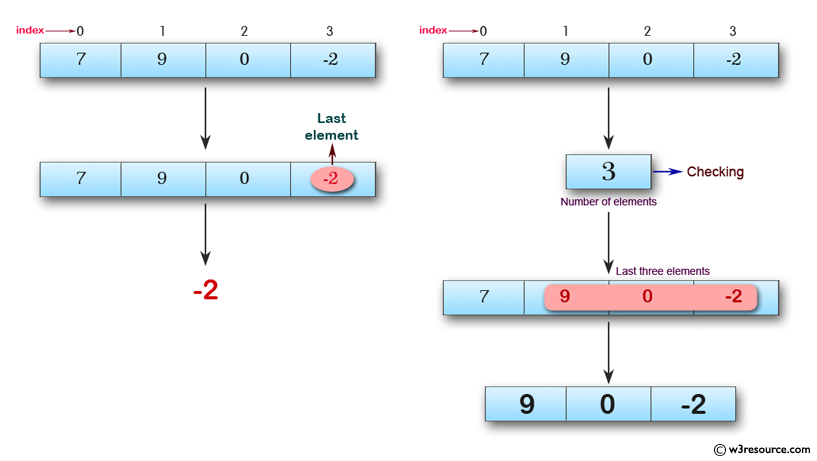

The splice method will return these elements, which will be stored inside the partials variable, and the numbers array will contain 100, 103, 104, and 105.
#JS SPLICE LAST ELEMENT CODE#
In the above code snippet, we're starting to delete the elements from index 1, and we'll be deleting two elements at index 1 and 2, i.e., 101 and 102. const numbers = Ĭonsole.log(partials) // output: If no elements were deleted by splice, it'd return an empty array. The splice method returns the array of deleted items. However, that won't be needed in our case as we're interested in only removing the elements for the sake of this example. It also accepts a third parameter that allows you to add new elements to the array. The first argument is the index from where we need to start deleting the elements, and the second argument is the number of items that need to be deleted. We need to provide two arguments to remove elements using the splice method. The splice method could be used to remove one or more elements from a specified array index.


const numbers = Ĭonsole.log(num) // output: undefined Removing elements from a specific index of the array. If the array under consideration is empty, the pop method will return undefined. The pop method works similarly to the shift method, except it removes the last element of the array and returns that element. We need to use the pop method to remove an element from the end of the JavaScript array. const numbers = Ĭonsole.log(num) // output: undefined Removing an element from the end of the array If the array is empty, it'll simply return undefined. It returns the removed element and adjusts the indexes for the remaining elements in the array. const numbers = Ĭonsole.log(numbers) // output: All you need to do is call the shift method on your array, and it'll remove the first element from your array, i.e., the element on the zeroth index. Usage for this method is quite straightforward. JavaScript comes bundled with a shift method that removes an element from the beginning of an array. Removing an element from the beginning of the array. In this article, we'll look at 5 different javascript array methods to remove an element from a JavaScript array. JavaScript provides multiple ways to add and remove elements from the array. You can use the filter() method to remove elements from an array based on a certain condition.An array is a special variable that holds a collection of values, i.e., multiple values at a given time. This method allows you to filter an array and return a new array with only the elements that meet a certain criteria. You can check the compatibility table on MDN for more information. However, it is not yet widely supported by browsers or environments. Instead, it returns a new array with some elements removed and/or replaced at a given index. There’s a new proposed toSpliced() method is similar to the splice() method, but it does not modify the original array. log (arr ) // // remove 6 from the arrayĬonsole. log (arr ) // // replace the third and fourth elements with "a" and "b"Īrr. log (arr ) // // remove the first element of the arrayĬonsole. Var arr = // add 6 and 7 at the end of the arrayĪrr.


 0 kommentar(er)
0 kommentar(er)
